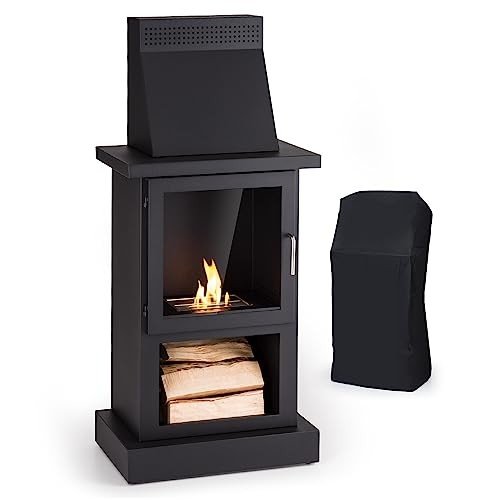
Fireplace Online
Add a review FollowOverview
-
Posted Jobs 0
-
Viewed 22
Company Description
Guide To Small Fireplaces: The Intermediate Guide To Small Fireplaces
A Comprehensive Guide to Small Fireplaces: Efficient Heating and Cozy Living
In an era where energy performance and area optimization are ending up being increasingly crucial, small fireplaces have actually emerged as an appealing alternative to traditional, large hearths. These compact heating solutions offer heat and a centerpiece for any space, increasing both convenience and aesthetic appeal. This short article explores the various types of small fireplaces, their benefits, setup considerations, and upkeep ideas, eventually assisting house owners make notified choices when thinking about these charming heating alternatives.
Understanding Small Fireplaces
Small fireplaces use a range of styles, including electric, gas, ethanol, and wood-burning designs. Each type presents unique advantages and design possibilities, making them appropriate for various living spaces.
Types of Small Fireplaces
| Electric | Uses electrical power to produce heat. Provides lots of designs, including wall-mounted and freestanding units. | – Easy to install – Low maintenance – No venting required |
– Limited heat output – May incur higher electricity expenses |
| Gas | Burns natural gas or lp. Typically available as logs in a traditional fireplace or modern designs. | – Efficient heat output – Cleaner than wood – Easy ignition |
– Requires gas line installation – Some systems require venting |
| Ethanol | Burns bioethanol, supplying real flames without a chimney. | – Eco-friendly – Portable – No setup required |
– Limited heat output – Higher fuel costs |
| Wood-Burning | Traditional fireplaces that burn firewood. Typically utilized in more rustic settings. | – Great heat output – Rich atmosphere – Can be utilized throughout power outages |
– Requires a chimney – Regular maintenance and cleaning |
Benefits of Small Fireplaces
- Area Efficiency: Small fireplaces are ideal for apartment or condos, condos, and smaller sized homes. They maximize heat without taking up excessive floor space.
- Affordable Heating: In specific cases, small fireplaces can supplement main heater, reducing overall energy expenses while producing a more comfortable environment.
- Atmosphere and Aesthetics: They supply a welcoming centerpiece to a room, developing a cozy atmosphere perfect for relaxation and celebrations.
- Adaptability: Available in different styles and styles, small fireplaces can complement any decoration, from modern minimalist to rustic traditional.
Setup Considerations
When pondering a small fireplace, installation is an important factor that can impact the option of design. Below are handy factors to consider:
- Local Regulations: Building codes can vary by location; constantly check regional standards before installation.
- Ventilation Needs: Depending on the type, small fireplaces might need various ventilation systems. Gas fireplaces may need venting outdoors, while electric models do not.
- Power Source: Electric models require distance to electric outlets, while gas and ethanol designs might require a gas line or fuel storage.
- Weight and Structure: Installing wall-mounted systems may need reinforced wall locations, whereas free-standing models are simpler to relocate.
Upkeep Tips
Like any other home appliance, small fireplaces need regular upkeep to work effectively and safely. Here are necessary maintenance suggestions for numerous fireplace types:
For Electric Fireplaces:
- Cleaning: Wipe down the unit with a soft cloth to remove dust and keep the heating unit ducts clear.
- Evaluation: Check the power cord routinely for any damages or signs of wear.
For Gas Fireplaces:
- Annual Inspections: Schedule yearly evaluations by a professional to ensure safe gas flow.
- Tidy the Logs: Regularly tidy the burner and logs to keep optimum efficiency.
For Ethanol Fireplaces:
- Fuel Storage: Store ethanol fuel safely far from direct sunlight and heat sources.
- Regular Cleaning: Clean the burner after each use to maintain effectiveness and avoid soot accumulation.
For Wood-Burning Fireplaces:
- Chimney Sweeping: Have the chimney expertly cleaned as soon as a year to avoid creosote accumulation.
- Fire wood Storage: Only usage dry, skilled wood to lessen smoke and promote effective burning.
Frequently Asked Questions
1. Can I set up a small fireplace myself?
While some electric and ethanol fireplaces are fairly simple to install, it is advisable to work with an expert for gas and wood-burning units to guarantee compliance with local building codes.
2. How much does it cost to run a small fireplace?
The cost will vary depending on the kind of fireplace. Typically, electric fireplaces might incur greater electrical power expenses, while wood-burning options can draw from sustainable firewood supplies.
3. Do I need an authorization for installation?
Licenses are typically needed for gas and wood-burning fireplaces due to their setup intricacy and security policies. Always check with regional authorities.
4. The length of time can I run an electric fireplace?
Most electric fireplaces can run for long durations; however, it’s suggested to follow producer guidelines to avoid getting too hot or damaging the system.
5. What kind of small fireplace is best for a small area?
This mainly depends upon individual needs. Electric designs are versatile and easy to set up, while gas and ethanol choices supply genuine flames with efficient heat output.
Small fireplaces represent a practical and stylish option for those looking for efficient heating solutions in compact living spaces. With various types offered, homeowners can choose models that line up with their visual choices and area requirements. By comprehending the installation processes and regular upkeep required, people can enjoy the convenience and ambiance that small fireplaces offer for many years to come. Whether for a cozy evening in your home or a welcoming space for events, small fireplaces are a long-lasting aspect of modern and traditional decor alike.


